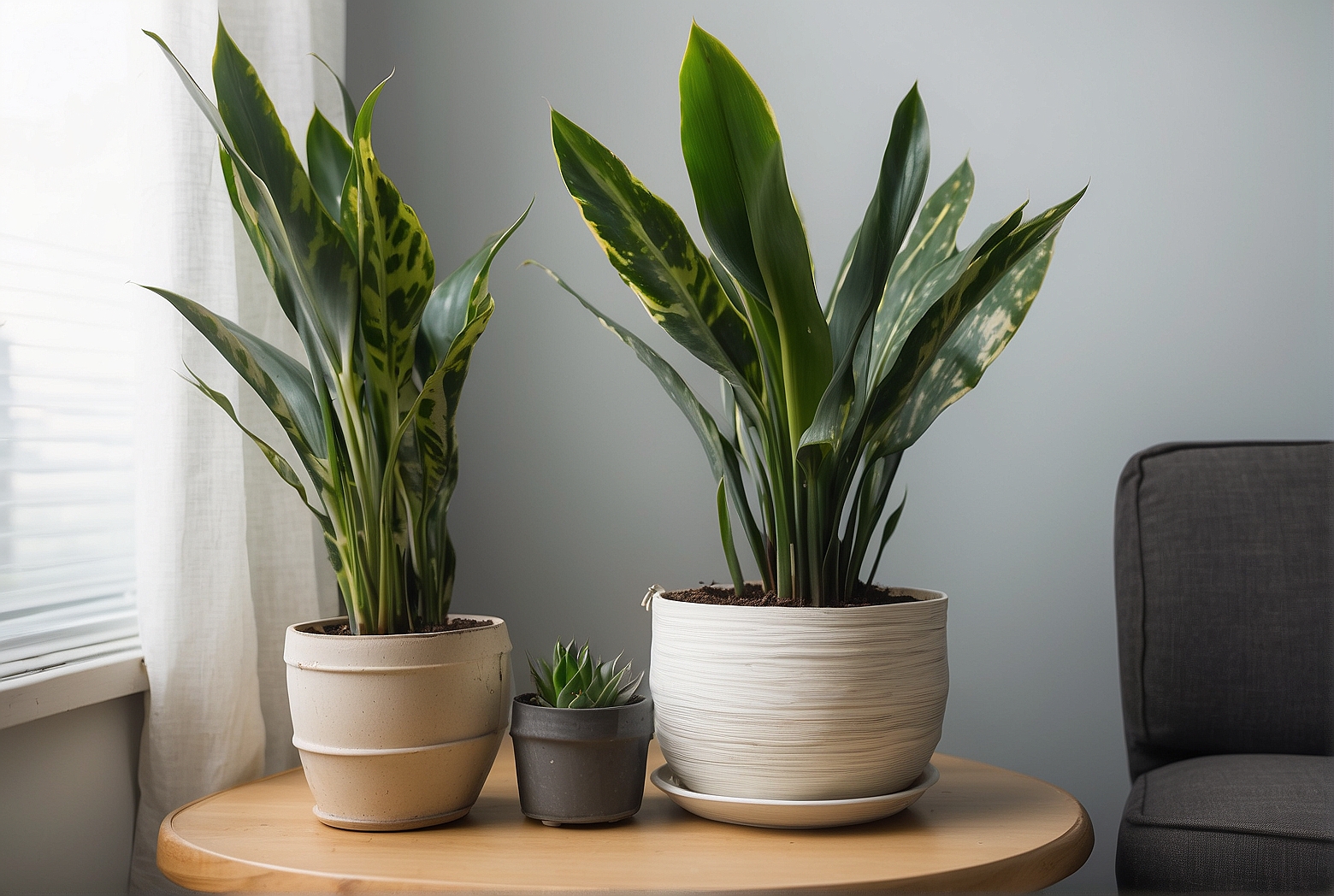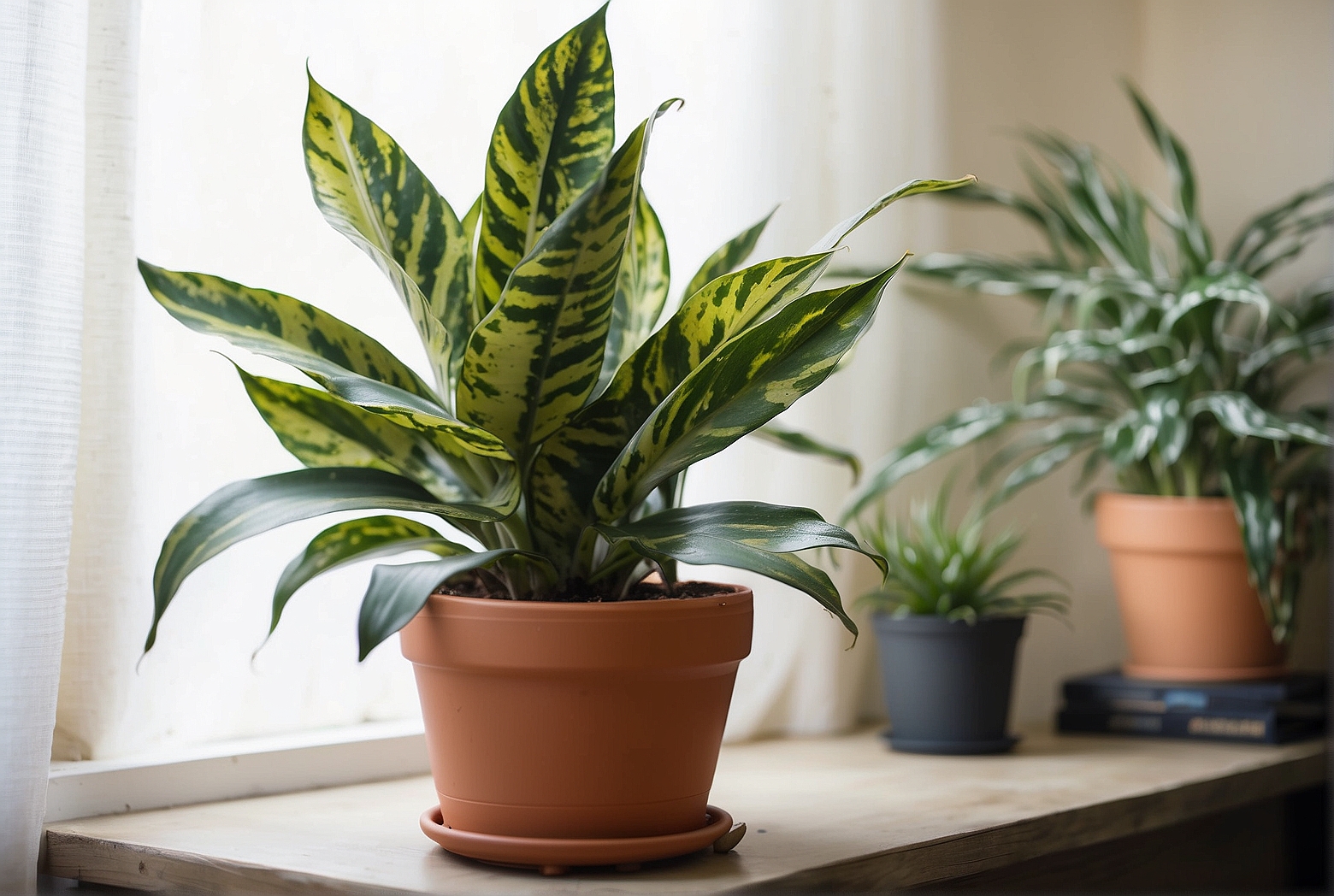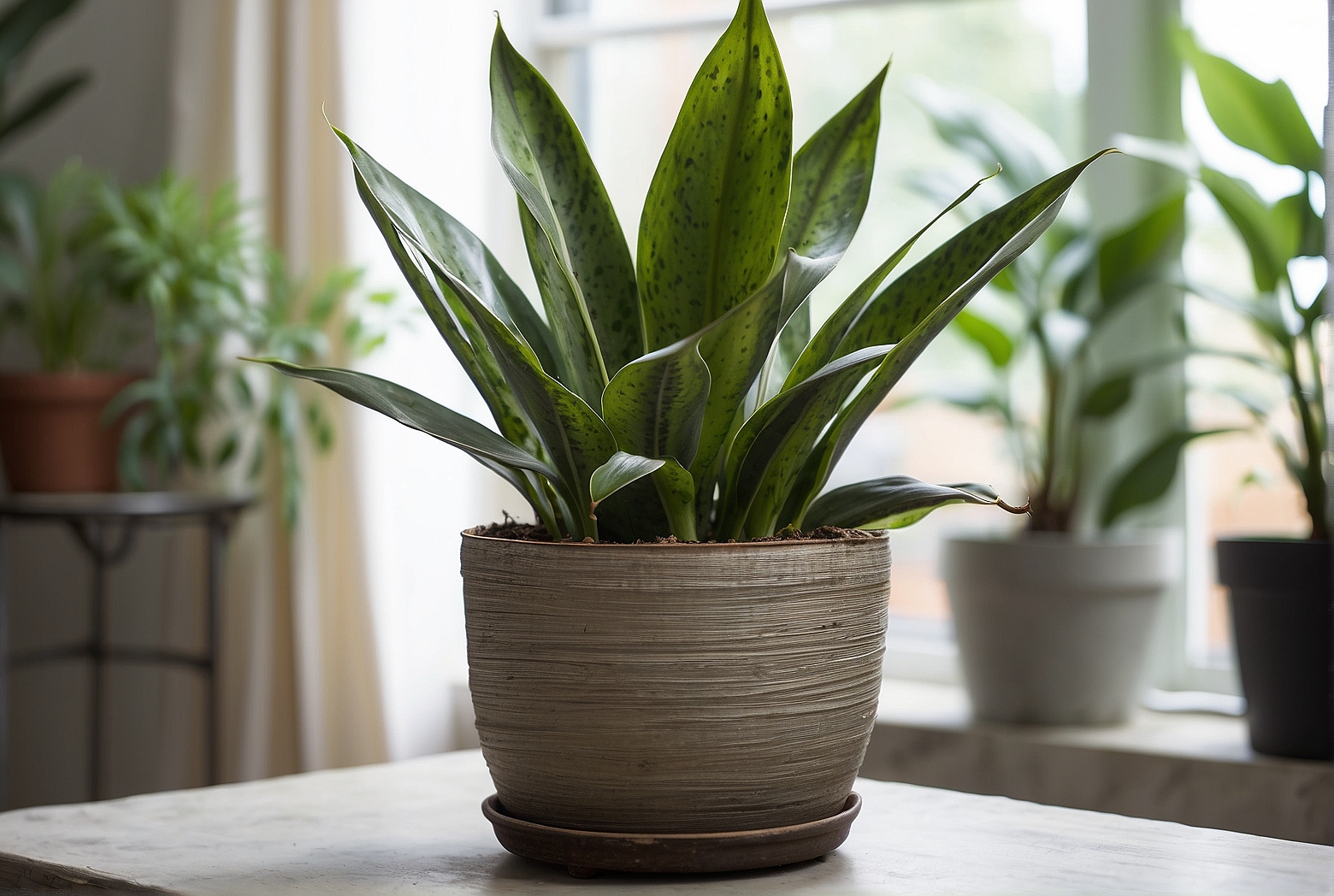Last Updated on April 20, 2024 by Tony Manhart
Have you ever noticed your snake plant leaning to one side and wondered why? It can be a puzzling sight, especially if you’ve been diligently caring for your beloved plant. But fear not, because in this article, we’ll uncover the reasons behind this curious phenomenon. Whether it’s due to improper watering, lack of sunlight, or other factors, we’ll explore the potential causes and provide helpful tips to restore your snake plant to its upright glory. So, let’s unravel the mystery of why your snake plant is leaning and give it the support it needs to thrive once again.
Insufficient light
Snake plants, also known as Sansevieria, require bright indirect light to thrive. Insufficient light can cause the plant to lean towards the light source in an attempt to receive more light. If your snake plant is leaning to one side, it may be a clear indication that it is not receiving enough light. To address this issue, it is essential to provide your snake plant with adequate light.
Snake plants need bright indirect light
Snake plants thrive in bright indirect light. They are not fond of direct sunlight, as it can scorch their leaves. Placing your snake plant near a window that receives filtered sunlight is ideal. If the plant is too far away from a light source, it may start leaning towards a window or light to maximize the amount of light it can absorb.
Lack of light can cause the plant to lean towards the light source
When a snake plant doesn’t receive sufficient light, it will naturally start leaning towards the light source. This phenomenon is called phototropism, where plants grow towards light. If the lean is significant, it can cause the plant to become imbalanced and potentially fall over. Providing adequate light will prevent your snake plant from leaning excessively.

Uneven watering
Inconsistent watering practices can also contribute to a snake plant leaning or falling over. Proper watering techniques are crucial for maintaining a healthy root system, as overwatering or underwatering can both have negative effects.
Inconsistent watering can lead to root rot
Root rot is a common issue caused by overwatering or poorly drained soil. When the soil is waterlogged for an extended period, the snake plant’s roots can become waterlogged and deprived of oxygen, leading to root rot. As the roots weaken and decay, the plant becomes more susceptible to leaning or falling over.
Ensure proper drainage and allow the soil to dry out between watering
To prevent root rot and establish a healthy root system, it is crucial to ensure proper drainage for your snake plant. Use well-draining soil and a pot with drainage holes to allow excess water to escape. Additionally, allow the soil to dry out between watering to avoid waterlogged conditions. Stick your finger about an inch into the soil – if it feels dry, it’s time to water your plant.
Pot size and stability
The pot size and stability of your snake plant can impact its ability to remain upright. An inadequate or too small pot may not provide enough stability, causing the plant to lean or fall over.

An inadequate or too small pot may not provide enough stability for the plant
If your snake plant has outgrown its pot and the roots are crowded, it may not have the stability it needs to remain upright. A small pot restricts root growth, and as the plant matures, it may outgrow its current container. Choosing an appropriately-sized pot provides adequate space for root growth and helps maintain the plant’s stability.
Consider repotting the snake plant in a larger, more stable container
If you notice your snake plant leaning or becoming top-heavy, it may be time to repot it. Select a pot that is wider and deeper, allowing the plant’s roots to spread and establish a solid foundation. Repotting will provide your snake plant with the necessary stability to grow upright.
Use well-draining soil to prevent waterlogged roots
Choosing the right soil is essential for the health of your snake plant. Well-draining soil allows excess water to flow through, preventing waterlogged conditions that can lead to root rot. Use a mix specifically designed for succulent plants or create your own well-draining soil mixture by combining equal parts potting soil, perlite, and coarse sand.
Imbalanced growth
The growth pattern of snake plants is influenced by light sources. Placing the plant near a window or light source on one side can cause it to lean towards that direction.
Snake plants tend to grow towards the light source
Snake plants exhibit positive phototropism, meaning they naturally grow towards light. If you position your snake plant near a window or light source on one side, it will tend to lean towards the light as it reaches for optimal light absorption.
Rotate the plant periodically to promote even growth
To ensure balanced and even growth, it is advisable to rotate your snake plant periodically. Turn the plant a quarter turn every few weeks or whenever you notice it leaning towards a specific direction. Rotating the plant will encourage it to grow straighter and provide uniform exposure to light.
Pest infestation
Pests can also contribute to a snake plant leaning or falling over. Certain pests, like spider mites or mealybugs, can affect the health of the plant, weakening it over time.
Certain pests like spider mites or mealybugs can affect the health of the snake plant
If your snake plant is infested with pests, such as spider mites or mealybugs, it can impact its overall health. These pests feed on the plant’s sap, causing damage to the leaves and weakening the plant’s structure.
Prolonged infestation can weaken the plant and cause it to lean or fall over
If left untreated, a pest infestation can severely weaken your snake plant. As the plant’s health deteriorates, it becomes more susceptible to leaning or even falling over. Regularly inspect your snake plant for any signs of pests to catch infestations early and take appropriate measures to get rid of them.
Inspect the plant regularly for any signs of pests and take appropriate measures
To prevent pest infestations and detect them early, it is essential to inspect your snake plant regularly. Check the leaves, stems, and soil for any signs of pests, such as webs, tiny crawling insects, or white cotton-like clusters. If you notice a pest problem, use organic or chemical treatments specifically designed for the type of pest infesting your plant.
Physical damage
Accidental bumps or knocks can cause a snake plant to lean or tilt. Physical damage to the plant or its pot can weaken its structure and stability.
Accidental bumps or knocks can cause the snake plant to lean or tilt
If your snake plant experiences physical trauma, such as accidental bumps or knocks, it may cause it to lean or tilt. The impact can damage the plant’s roots and overall structure, making it more susceptible to leaning.
Check if the plant or its pot has been damaged
After an accidental bump or knock, it is essential to inspect your snake plant for any signs of damage. Check the stems, leaves, and roots for any breakage or signs of stress. Similarly, examine the pot for cracks or dents that may compromise its stability.
Provide support or stake the plant if needed
For a snake plant that has been physically damaged and is leaning considerably, providing support or staking it may be necessary. Use a bamboo skewer or stake placed near the plant’s base to provide support and keep it upright. Avoid tying the plant too tightly to allow for natural growth and circulation.
Nutrient deficiency
Inadequate nutrient levels in the soil can weaken a snake plant, making it more prone to leaning or falling over. Ensuring the plant receives balanced nutrients is crucial for its overall health and stability.
Inadequate nutrient levels in the soil can weaken the plant
If your snake plant is not receiving enough nutrients, it can experience deficiencies that weaken its structure and stability. Without the necessary nutrients, the plant’s growth can be stunted, and it may become more susceptible to leaning or falling over.
Ensure the snake plant is receiving balanced nutrients
To prevent nutrient deficiencies, ensure that your snake plant is receiving balanced nutrients. Use a slow-release fertilizer specifically formulated for succulent plants or apply a diluted liquid fertilizer during the growing season. Follow the instructions on the fertilizer packaging for the correct dosage and frequency.
Consider using a slow-release fertilizer or organic compost
If you prefer a low-maintenance approach, consider using slow-release fertilizers or organic compost. Slow-release fertilizers gradually release nutrients over time, providing a continuous source of nourishment. Organic compost can also be incorporated into the soil to improve its nutrient content naturally.
Temperature extremes
Extreme temperatures, whether too hot or too cold, can stress a snake plant and lead to leaning or falling over. Maintaining a suitable temperature range is crucial for the plant’s overall health and stability.
Extreme temperatures, whether too hot or too cold, can stress the snake plant
Snake plants are native to West Africa and thrive in temperatures between 70°F (21°C) and 90°F (32°C). Extreme temperatures outside this range can cause stress to the plant, which can manifest as leaning or falling over. It is important to maintain a suitable temperature environment for your snake plant.
Maintain a suitable temperature range for the plant
To prevent temperature-related stress, ensure that your snake plant is kept in a suitable temperature range. avoid placing it near heat sources such as radiators or drafty windows. If your snake plant is exposed to colder temperatures, consider moving it to a warmer location during the winter months.
Overcrowding
If your snake plant is overcrowded by other plants or objects, it may tilt or lean towards an open area to seek more space and light.
If the snake plant is crowded by other plants or objects, it may lean towards an open area
Overcrowding can be a common cause of a leaning snake plant. If the plant is surrounded by other plants or objects that limit its space or light exposure, it may start leaning towards nearby open spaces in an attempt to gain more room for growth.
Provide enough space for the plant to grow and spread its leaves
To avoid overcrowding and promote upright growth, ensure that your snake plant has enough space. If it is sharing a pot with other plants, considering repotting it to provide ample room for its roots to spread and grow. Additionally, ensure that nearby objects are not obstructing its growth or light access.
Consider rearranging or repotting to address crowding issues
If you notice your snake plant leaning due to overcrowding, consider rearranging your indoor plants or repotting it into a larger pot. This will give your snake plant the space it needs to grow vertically and prevent it from leaning towards open areas.
Age and natural growth habit
As snake plants mature, they may naturally lean or arch towards one side. This is a normal growth habit and not necessarily a cause for concern.
As snake plants mature, they may naturally lean or arch towards one side
Snake plants have a natural growth habit characterized by their leaves arching or leaning towards one side. It is more common in mature plants and less prominent in younger ones. This growth habit adds uniqueness and character to the plant, showcasing its age and individuality.
Appreciate the unique shape and adjust the plant’s position if desired
If the leaning or arching growth habit is not aesthetically pleasing to you, you can adjust the plant’s positioning. Gently rotate the plant in its pot, experimenting with different angles until you find a position that you prefer. However, it’s important to note that some degree of leaning or arching is normal and shouldn’t be considered a cause for concern.
In conclusion, there are various factors that can contribute to a snake plant leaning or falling over. Insufficient light, uneven watering, pot size and stability, imbalanced growth, pest infestation, physical damage, nutrient deficiency, temperature extremes, overcrowding, and natural growth habit can all play a role. By addressing these issues and providing the necessary care, you can ensure your snake plant remains healthy, upright, and visually appealing.
Tony Manhart is a passionate gardener who has been tending to gardens for over 20 years. He takes pride in creating beautiful outdoor spaces with plants, trees, and shrubs that can thrive in any environment. He loves to share his knowledge with others and has taught classes on gardening basics and advanced techniques. He is committed to sustainability, using natural and organic methods to create and maintain gardens. He also works with local organizations to create green spaces for communities. When he’s not gardening, Tony enjoys hiking, reading, and spending time with his family.

